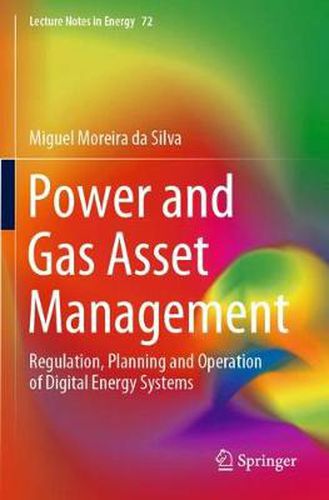Readings Newsletter
Become a Readings Member to make your shopping experience even easier.
Sign in or sign up for free!
You’re not far away from qualifying for FREE standard shipping within Australia
You’ve qualified for FREE standard shipping within Australia
The cart is loading…






This title is printed to order. This book may have been self-published. If so, we cannot guarantee the quality of the content. In the main most books will have gone through the editing process however some may not. We therefore suggest that you be aware of this before ordering this book. If in doubt check either the author or publisher’s details as we are unable to accept any returns unless they are faulty. Please contact us if you have any questions.
This book offers meaningful insights into an impending challenge for the energy industry, namely the increasing role of asset management amongst the utilities’ core operations. In the aftermath of energy digitalization, power and gas companies will be able to seize asset productivity-through risk-based operation and maintenance-and better balance capital and operational expenditures. By addressing the asset management of both power and gas infrastructures, and by adopting a comprehensive approach-including regulation and business models, as well as a solid technology background-this book offers a unique perspective on the energy utilities’ transformation journey and the road to optimal decision-making for both asset portfolio expansion and replacement. The asset management end-to-end mission requires appropriate internal governance-depending on the business framework-and the development of decision aid models (for asset replacement and maintenance), supported on probabilistic risk and reliability indexes. This book advocates systematically digitalizing the power and gas assets, addressing both data governance and infrastructure, alongside real-time equipment condition monitoring. It also provides a meaningful methodology for designing data-centric asset management and predictive operation and maintenance, using artificial intelligence and engineering-based approaches.
As such, it provides valuable strategy, methods and models-illustrated by case studies and proofs of concept-for a wide range of stakeholders, including utilities and industry professionals, regulators, policy-makers, researchers and students.
$9.00 standard shipping within Australia
FREE standard shipping within Australia for orders over $100.00
Express & International shipping calculated at checkout
This title is printed to order. This book may have been self-published. If so, we cannot guarantee the quality of the content. In the main most books will have gone through the editing process however some may not. We therefore suggest that you be aware of this before ordering this book. If in doubt check either the author or publisher’s details as we are unable to accept any returns unless they are faulty. Please contact us if you have any questions.
This book offers meaningful insights into an impending challenge for the energy industry, namely the increasing role of asset management amongst the utilities’ core operations. In the aftermath of energy digitalization, power and gas companies will be able to seize asset productivity-through risk-based operation and maintenance-and better balance capital and operational expenditures. By addressing the asset management of both power and gas infrastructures, and by adopting a comprehensive approach-including regulation and business models, as well as a solid technology background-this book offers a unique perspective on the energy utilities’ transformation journey and the road to optimal decision-making for both asset portfolio expansion and replacement. The asset management end-to-end mission requires appropriate internal governance-depending on the business framework-and the development of decision aid models (for asset replacement and maintenance), supported on probabilistic risk and reliability indexes. This book advocates systematically digitalizing the power and gas assets, addressing both data governance and infrastructure, alongside real-time equipment condition monitoring. It also provides a meaningful methodology for designing data-centric asset management and predictive operation and maintenance, using artificial intelligence and engineering-based approaches.
As such, it provides valuable strategy, methods and models-illustrated by case studies and proofs of concept-for a wide range of stakeholders, including utilities and industry professionals, regulators, policy-makers, researchers and students.